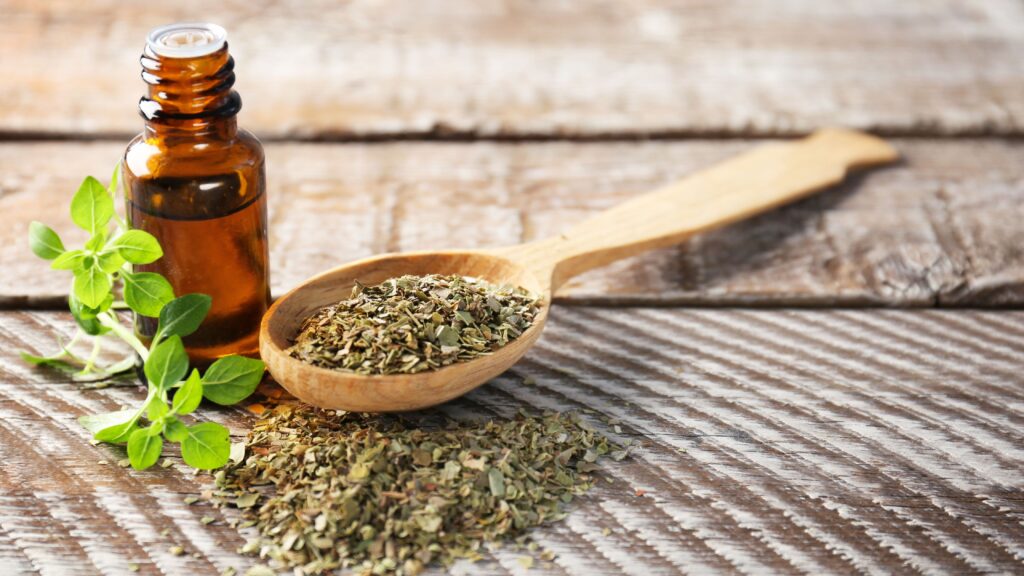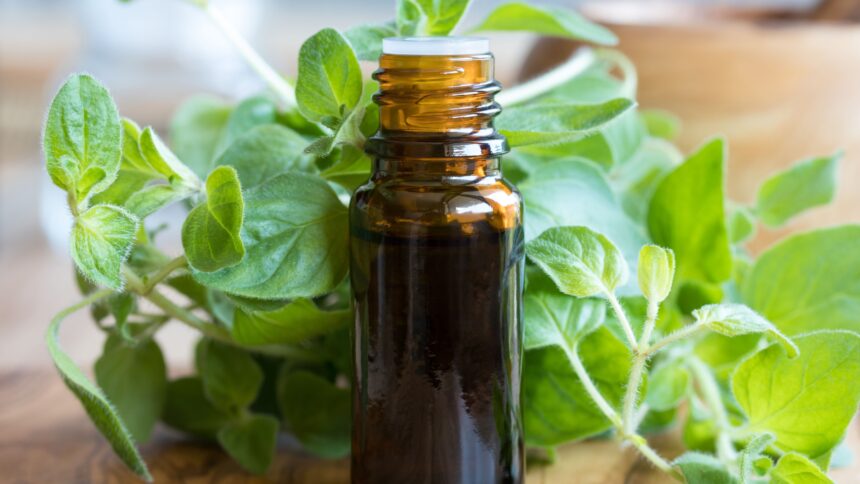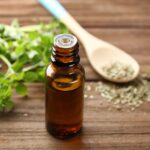Oregano oil is a powerful natural remedy known for its antibacterial, antifungal, and antiviral properties. Many people use oregano oil for a variety of health benefits, from boosting the immune system to treating skin conditions. Learning how to make oregano oil at home can save you money and ensure you have a pure product. In this guide, we’ll walk you through the process step-by-step.
Understanding the Benefits of Oregano Oil
Before diving into how to make oregano oil, it’s essential to understand why this oil is so beneficial. Oregano oil contains compounds such as carvacrol and thymol, which have strong antimicrobial properties. These compounds can help fight off infections, soothe inflammation, and improve overall health.
Health Benefits
- Antimicrobial Properties: Oregano oil is effective against a variety of bacteria and fungi, making it useful for infections and skin conditions.
- Anti-Inflammatory Effects: The oil can help reduce inflammation, which is beneficial for conditions like arthritis.
- Antioxidant Power: Oregano oil contains antioxidants that help protect the body from oxidative stress and free radical damage.
- Digestive Health: It can aid in digestion and help alleviate issues like bloating and indigestion.
Ingredients and Materials Needed
To start the process of making oregano oil, gather the following ingredients and materials:
- Fresh or dried oregano leaves
- Carrier oil (such as olive oil, coconut oil, or grapeseed oil)
- A clean glass jar with a tight-fitting lid
- A cheesecloth or fine mesh strainer
- A small, dark glass bottle for storage
Step-by-Step Guide on How to Make Oregano Oil

Step 1: Selecting the Oregano
The first step in learning how to make oregano oil is selecting the right oregano. You can use either fresh or dried oregano leaves. Fresh oregano has a more potent aroma and flavor, but dried oregano is more concentrated.
- Fresh Oregano: If using fresh oregano, pick the leaves early in the morning when their essential oils are most concentrated. Rinse them thoroughly to remove any dirt or pesticides.
- Dried Oregano: If using dried oregano, ensure that it is from a reliable source and free from contaminants.
Step 2: Preparing the Oregano
If you’re using fresh oregano, allow the leaves to dry for a few hours after rinsing. This step is crucial to remove any excess moisture, which can cause the oil to spoil.
Step 3: Choosing the Carrier Oil
The carrier oil you select will impact the final product’s flavor and shelf life. Olive oil is a popular choice due to its own health benefits and relatively long shelf life. Coconut oil is another good option, especially for its antimicrobial properties.
Step 4: Infusing the Oregano
- Crush the Oregano: Lightly crush the oregano leaves to help release their essential oils. This can be done using a mortar and pestle or by rubbing them between your hands.
- Combine with Carrier Oil: Place the crushed oregano leaves in a clean glass jar. Pour your chosen carrier oil over the leaves until they are fully submerged.
- Seal and Store: Seal the jar tightly and store it in a warm, sunny spot. The heat will help the oregano infuse into the oil. Shake the jar gently every couple of days to mix the contents.
Step 5: Straining and Storing the Oil
After two weeks, the infusion process will be complete.
- Strain the Oil: Use a cheesecloth or fine mesh strainer to separate the oregano leaves from the oil. Make sure to squeeze out as much oil as possible from the leaves.
- Transfer to a Dark Bottle: Pour the strained oil into a dark glass bottle. Dark glass helps protect the oil from light, which can degrade its quality.
- Storage: Store the oregano oil in a cool, dark place. Properly stored, the oil can last for up to a year.
Using Your Homemade Oregano Oil
Now that you know how to make oregano oil, you can use it in various ways:
- Topical Application: Dilute oregano oil with a carrier oil before applying it to the skin to treat infections, acne, or fungal conditions.
- Aromatherapy: Add a few drops of oregano oil to a diffuser to help purify the air and boost your immune system.
- Internal Use: Some people take oregano oil internally to boost their immune system, but it’s crucial to dilute it properly and consult a healthcare provider before doing so.
Safety Precautions
Keep in mind these safety tips:
- Dilution: Oregano oil is very potent and should always be diluted with a carrier oil before topical use.
- Allergic Reactions: Conduct a patch test if you’re using oregano oil on your skin for the first time. Apply a small amount of diluted oil to a patch of skin and wait 24 hours to ensure you do not have an allergic reaction.
- Internal Use: If you plan to take oregano oil internally, always use a high-quality, food-grade oil. Start with a very small amount, and consult with a healthcare provider, especially if you have existing health conditions or are pregnant or breastfeeding.
- Avoid Sensitive Areas: Do not apply oregano oil near sensitive areas such as the eyes, mucous membranes, or genitals. If accidental contact occurs, rinse thoroughly with water and seek medical advice if irritation persists.
FAQs:
Can You Use Different Types of Oregano?
Yes, there are several species of oregano, and each has slightly different properties. Common oregano (Origanum vulgare) and Mediterranean oregano (Origanum onites) are both excellent choices for making oregano oil due to their high concentrations of beneficial compounds.
How Long Does Homemade Oregano Oil Last?
When stored properly in a cool, dark place, homemade oregano oil can last up to a year. Using a dark glass bottle for storage can help extend its shelf life by protecting it from light.
Can You Use Oregano Essential Oil Instead of Fresh or Dried Oregano?
Oregano essential oil is much more concentrated than infused oregano oil and should be used with caution. It’s typically used in smaller amounts and always diluted. Infused oregano oil, as described in this guide, is safer and easier to make at home.
Enhancing Your Oregano Oil
For those who want to experiment further with their homemade oregano oil, here are a few ideas to enhance the oil’s properties:
- Add Other Herbs: Combine oregano with other beneficial herbs like thyme, rosemary, or basil during the infusion process. This can boost the oil’s antimicrobial and antioxidant properties.
- Use Different Carrier Oils: Each carrier oil brings its own benefits. For example, jojoba oil is excellent for skin applications, while avocado oil is rich in vitamins that support skin health.
- Double Infusion: For a stronger oregano oil, you can perform a double infusion. Once you strain the first batch, add fresh oregano leaves to the strained oil and repeat the process.
Environmental and Ethical Considerations
Making your own oregano oil at home can be a more sustainable and ethical choice compared to buying commercially produced oils. By choosing organic oregano and a high-quality carrier oil, you can ensure that your product is free from harmful pesticides and chemicals. Additionally, homemade oregano oil reduces packaging waste and transportation emissions associated with store-bought products.
Conclusion
Learning how to make oregano oil at home is a rewarding process that allows you to harness the powerful health benefits of this natural remedy. By following the steps outlined in this guide, you can create a high-quality oregano oil tailored to your needs. Whether you use it for its antimicrobial properties, anti-inflammatory effects, or as a general health booster, homemade oregano oil is a valuable addition to your natural wellness toolkit.
Remember, while oregano oil is a potent natural remedy, it’s always important to use it responsibly. Dilution is key to safe use, particularly for topical and internal applications. If in doubt, consult with a healthcare professional to ensure you’re using oregano oil in a way that is safe and beneficial for your health.




